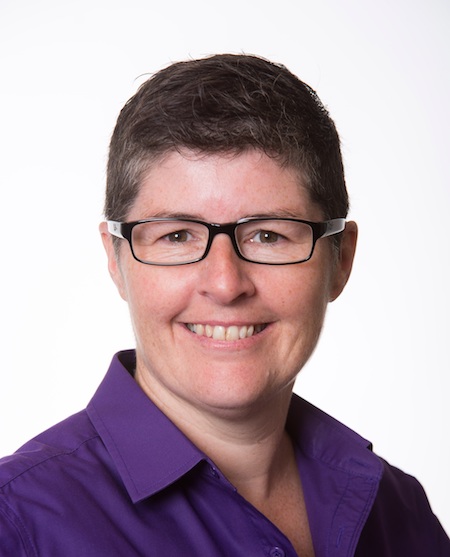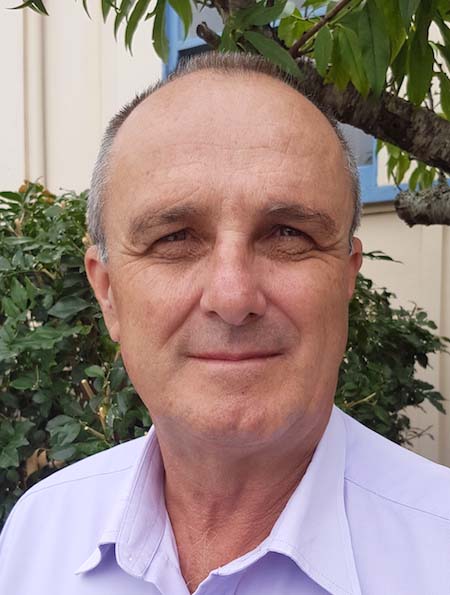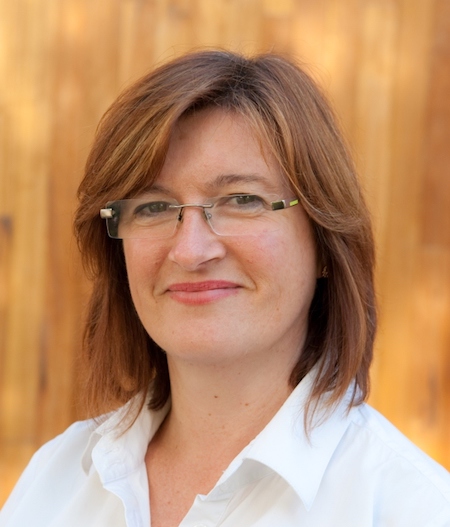
Funding their vision: organisations share their stories
Four very different social purpose organisations describe how social impact investing has provided a flexible, mission-aligned and supportive approach to funding their vision – often to their surprise.

- Leaders from four social purpose organisations describe their experience of impact investing as a source of funding for their project or organisation.
- Impact investing can bring much more to the table than simply the provision of capital.
- Additional benefits include financiers who support your vision, values and mission alignment, strategic and business insights, assistance with the implementation of new, robust reporting systems, and advice on increasing the impact of the investment.
- Impact investing capital can also be more flexible than more mainstream capital sources with flexible terms, longer financing periods and adaptable repayment schedules.
All organisations, social purpose or otherwise, get to a point in their life cycle where external funding is needed to enable them to grow further. Mainstream banks and financial institutions, traditionally the first point of call for this funding, is not a route open to many social purpose organisations.
Traditional financiers may not be able to fund unproven business models and organisations without a track record of profit making. Also, certain financiers may require a minimum level of financial performance to be met before considering investing.
However, with the growth of the impact investing market in Australia ($1.2 billion under investment in 2015 potentially growing to $32bn in 2023)[1], many social purpose organisations are now finding impact investing is a solution to their funding requirements.
Impact investing can be broadly defined as ‘the use of financing and investment approaches to deliver both a social, environmental or cultural return as well as a financial one’.[2] Recently, impact investing as an asset class has begun to emerge into the consciousness of both investors and social purpose organisations across Australia, taking the lead from the US and Europe where the market started in earnest in 2007.
Impact investing may not be the answer for all organisations, and it is certainly not the silver bullet for funding in the non-profit and social purpose sector, but it is a funding stream that is worth exploring for many.
To dig deeper into the advantages and potential challenges of social impact investing, this article explores the impact investing journey of four of SVA’s investee organisations:[3]
- Glenview Community Services, a non-profit aged care operator in Hobart which is embarking on a transformative dementia care project;
- Nightingale Housing, a social purpose organisation bringing a new model of financially sustainable, affordable housing;
- The Integrated Medical Centre, a social enterprise run by cohealth – a non-profit community health organisation based in Melbourne; and
- Ability Enterprises, a Toowoomba-based social enterprise providing jobs for people with mental health issues.
Having a vision

Tasmanian aged-care provider, Glenview was seeking to construct Australia’s first dementia village. Based on an innovative care model with elements pioneered in the Netherlands, the centre (to be called Korongee) features homes tailored to the residents’ demographics. It gives residents freedom in a safe and supported location, yet in a real village environment with shops and cafes that the general public frequent. Overseas research has shown that the care model can have transformative health benefits.
“Korongee started from the perspective that if we want to get different outcomes we need to do something different,” says Glenview’s CEO, Lucy O’Flaherty. “We needed to dare to be different and this included how we funded the project.
“We were fortunate that we’d been given $3m in seed funding from the Commonwealth Government to explore this and that’s where the story took off.”
You can have a very meaningful story that engenders enthusiasm from financiers.
Having approached SVA for potential financing, O’Flaherty was surprised with the initial discussions. “Conversations with financiers are often very different. It’s usually about returns and how much money is in the bank. Working with Social Ventures Australia changed my experience of the way that you can look at this. You can have a very meaningful story that engenders enthusiasm from financiers.”
As well as the seed funding, Glenview is using a $19m loan, provided through HESTA’s Social Impact Investment Trust managed by SVA, to construct Korongee.
Korongee is a new project for Glenview; the care model, although piloted at Glenview’s existing residential facility, is as yet untested in Australia. It is organisations or projects like this without a track record (especially financial) that find it hard to attract mainstream funding. In these cases, impact investing may fill the gap.
For Jeremy McLeod, an architect and one of the founding members of the Nightingale Housing project in Melbourne, the use of impact investing began at the project’s onset. Early stage equity of $2.7 million for land and initial costs was raised from friends, family and colleagues who were willing to back a project whose social returns resonated with them. This, by definition, was impact investing at work.
McLeod told us “Nightingale was created by seven architects as an entity to deliver housing not speculative products for profit. We decided that if we’re going to do housing it had to be sustainable, financially transparent, and affordable, and it had to build community, and be liveable.”
“With affordability as a key goal, we were after a specific type of construction finance for the $6 million dollars we needed,” explains McLeod. “We didn’t want traditional development finance which is basically for speculative developers.”

To get traditional development finance you need to show a minimum profit of 20%, and our profit was capped at 15% to deliver more affordable housing.”
The need for ‘non-traditional’ financing resulted in a syndicate of impact investors led by Social Enterprise Finance Australia (SEFA) and including SVA, Christian Super, the McKinnon Family Foundation and a private philanthropist. Together they provided the $6 million of debt financing for the project.
They were able to understand what we were trying to do from an altruistic perspective.
Impact investing capital can often be more flexible than more mainstream capital sources. This may be reflected in the way it is structured with flexible terms, longer financing periods and adaptable repayment schedules.
In the case of Glenview and Nightingale, flexibility was especially important as they were raising external capital for the first time and this gave them time to adapt to investors’ requirements.
Flexible financing terms also enable organisations to more easily navigate the conditions associated with the borrowing (reporting, repayment, etc.) and ensures delivering the project’s vision remains the focus.
Values and mission alignment
What impressed O’Flaherty when she first spoke to SVA was that “a bunch of financiers” were interested in what the investment meant in terms of the aged care services that would be delivered and for the life of an individual living with dementia.
“They were able to understand what we were trying to do from an altruistic perspective in terms of care and compassion as well as being able to help us unpack financially what it meant. There are financial benefits but it’s a partnership, it’s a relationship,” she stated.
Unlike mainstream financiers, impact investors include social returns in their risk-return analysis.

As a start-up social enterprise without a track record of operations or revenue generation, Ability Enterprises in Toowoomba would not have been a candidate for traditional financing. However, in analysing the risks and returns, SVA took into account the potential social impact of the enterprise which was established to provide employment primarily for people with an experience of mental illness.
“With the $170,000 loan, Ability Enterprises has now, five years on, positively changed over 130 people’s lives through employment that otherwise was not open to them,” says Bruce Russell, General Manager of Ability Enterprises.
Having an interest in the social return results in strong values and outcomes alignment between investors and clients, something that is rare when a traditional financier is the capital provider. This values alignment often adds a different dynamic to the investor-investee relationship.
As McLeod reflects “once we knew that there was values and mission alignment with the syndicate members, working through the commercial terms became relatively straightforward.”
“They understood why we were trying to do things differently and they were very supportive because they knew that the outcome would deliver better housing and sustainability and a better sense of community.”
… the syndicate members… said ‘how do we find a way to make it work’, not ‘how do we find a way to say no’.
“Did we have to go through a thorough due diligence process? Absolutely,” says McLeod. “But where there’s values alignment everyone is looking to find a way to make it work.”
“What we found through this entire process was that the syndicate members all believed that this is a good thing, and said ‘how do we find a way to make it work’, not ‘how do we find a way to say no’. It was a very different approach to funding to what I’d been exposed to before.”
Strategic and business insight
So what happened once the financing was agreed? What was the ongoing relationship?
Many of the investees spoke about their close relationship with the impact investing fund managers and the additional insight they provide alongside the investment.
As O’Flaherty reflects “SVA has been incredibly patient and nurturing in helping us reach a decision where we feel comfortable that we’ve done the right due diligence, have the right safety nets, and have sought the right advice.”
Jane Canaway, Executive Director at cohealth which manages The Integrated Medical Centre values the additional skills and open dialogue that came with working with impact investors. cohealth raised funding in the form of a $450,000 loan[4] from Social Traders and SVA for the healthcare clinic that provides healthcare services in North Fitzroy in Melbourne. Profits from the social enterprise go back into the wider community through funding a range of community health care programs provided by cohealth.
When the social enterprise was set up it took some time to become profitable, explains Canaway.
“We were used to this from our other medical centres, but SVA and Social Traders were quick to remind us that our goal was profit,” she says. Profitability not only drives the capital repayment but critically cohealth’s social impact through its programs for more vulnerable members of the community.

I would have taken a lot longer to get there if I hadn’t had their advice.
“We had to think quite differently about how the business is run and what we are trying to achieve,” says Canaway. “Social Traders and SVA provided ideas about ways to improve the business performance. If you get a bank investor it’s much more distant, whereas this relationship was really face-to-face, quite hands on.
“It was a completely different way of thinking about things. I would have taken a lot longer to get there if I hadn’t had their advice.”
The open dialogue over the life of the funding had been Russell’s experience as General Manager of Ability Enterprises.
This enabled us to focus on the business, as when we got into trouble we could talk quite openly about what the troubles were and where we needed help.
The fledgling social enterprise raised the loan from SVA off the back of an initial contract with Toowoomba Regional Council to operate the gatehouses at local waste management facilities. The loan proceeds covered working capital and start-up costs, with the net profit of its operations servicing the loan.
Partly as a result of the early stage of the organisation Ability Enterprises had a range of governance and process issues over the life of the SVA investment.
Russell highlights, “Not only did SVA provide funds, but offered support and some expertise which was not within the organisation. This enabled us to focus on the business, as when we got into trouble we could talk quite openly about what the troubles were and where we needed help. That’s not always the case if you borrow through other more mainstream means.”
This active investment approach means that investees may receive a much more hands on approach than with traditional financiers who often have a ‘set and forget’ attitude to providing capital. It also allows impact investing in more early stage organisations because of the oversight that goes with the financing.
Other benefits
The investees also received additional benefits of impact investing including assistance with the implementation of new, robust reporting systems, and advice on increasing the impact of the investment.
We also incorporated that reporting into our own internal performance monitoring, so it was useful.
As Canaway says “The challenges were that there was additional reporting, although SVA went to pains to make sure that any reporting we did was useful for us. We also incorporated that reporting into our own internal performance monitoring, so it was useful.”
In the case of Nightingale, SVA’s Impact Investing Director, Alex Oppes gave Nightingale Housing’s board additional advice and guidance on how the project could increase its social value. The idea of disability housing was introduced as was the encouragement of values aligned tenants in the building. As a result, the ground floor of Nightingale 1 is occupied by Home1, a social enterprise which works closely with homeless people to provide training and employment opportunities. At Nightingale’s request, Oppes also now sits on the licencing committee. As McLeod says “Alex can look at things from a financial perspective and this has been invaluable.
Reflections on impact investing
The reasons these investee companies chose impact investing varies. And even though the journey for some of them was challenging, all of them believe the decision has been a good one.
As Canaway discovered, impact investing can bring much more to the table than simply the provision of capital. “The idea that a start-up, or a small organisation, can get both the funds they need to get going, but also that really close oversight and checking and support is fantastic.”
… you need to find an impact investor that can understand your vision and understand why it’s important to help that vision be realised.
This alignment of values, vision and approach is a common theme for these four investees and a large driver of the successful relationship. As Russell states “There’s a synergy in approach, in vision, and in what’s trying to be achieved. That helps with how an organisation can develop because of that fundamental safety net. The intent of banks is quite different.”
A strong, open and close relationship between both investor and investee plays a large part in ensuring the capital provided delivers the social impact it was initially raised for.
As McLeod acknowledges “If you have a vision for what it is you want to deliver without being bound to status quo financing requiring you to deliver status quo outcomes, then you need to find an impact investor that can understand your vision and understand why it’s important to help that vision be realised.”
Author: Rebecca Thomas
[1] Benchmarking Impact Australian Impact Investing Activity and Performance Report 2016
[2] Innovative Finance, Rockefeller Foundation website
[3] SVA was co-investor in some of these companies
[4] cohealth only used $300,000 of the loan








